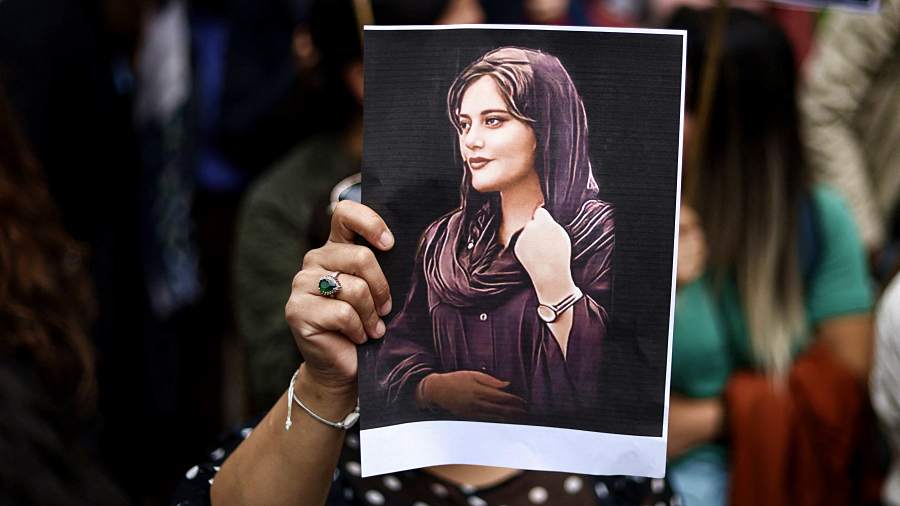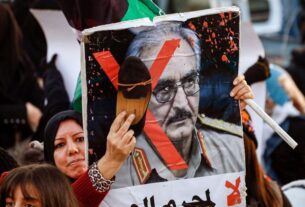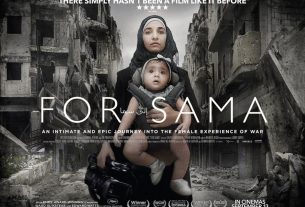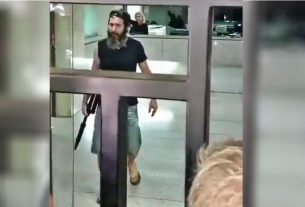Sat 16 September 2023:
Tehran, Iran – Saturday marks one year since Mahsa Amini died, sparking protests across Iran and leading to a chain of events, the effects of which remain fresh in the minds of Iranians.
Amini, also known as Jina, was a 22-year-old woman from the northwestern province of Kurdistan who had travelled to capital Tehran with her family.
She was coming out of a metro station in Tehran with family members when she was arrested by morality police for alleged non-compliance with the country’s mandatory hijab rules that have been in place since shortly after Iran’s 1979 Islamic revolution.
She was put in a van and taken to a so-called re-education centre where women receive guidance on how to dress properly. Surveillance camera footage released by Iranian law enforcement showed how she collapsed when she was there and was taken to a hospital, where she died days later.
Iranian authorities said she suffered an attack because of pre-existing conditions, but her parents countered that account, saying she may have been beaten.
A demonstration first formed in front of the hospital she was taken to in Tehran, followed by protests in her hometown of Saqqez, which then spread to cities and towns across the country.
After months, by the time street protests gradually died down earlier this year, foreign-based human rights organisations say more than 500 people were killed, including at least 70 minors.
The only official death toll released by the authorities came in early December last year when the protests were still raging.
At the time, the state security council of the interior ministry said more than 200 people were dead including dozens of security forces, those killed in “terrorist acts”, those killed by foreign-affiliated groups and framed as killed by the state, “rioters” and “armed anti-revolutionary elements who were members of secessionist groups”.
Thousands were also arrested during the demonstrations, most of whom were released after a pardon by Supreme Leader Ali Hosseini Khamenei in February. But some, including a number of journalists, remain imprisoned.
What’s changed since?
The issue of hijab and women’s rights has been at the centre of demonstrations inside and outside Iran, with Amini’s name and chants of “woman, life, freedom” becoming common refrains.
Inside Iran, many women have chosen to change the way they dress and forego their headscarves.
But the hijab remains mandatory as per Iranian law and religious teachings, and authorities have signalled this will not change, so they have engaged in a series of efforts to counter this shift.
They are using smart cameras to identify violators in public and in their vehicles who could be subject to judicial punishment, and have redeployed the morality police.
Many cafes and restaurants have been shuttered for offering services to women deemed to have a loose hijab. And celebrities, including actresses, have had court cases brought against them. Large banners praising the virtues of the hijab have also become a familiar sight in Tehran and other cities in the aftermath of the demonstrations.
A new hijab law is soon expected to be ratified, which lawmakers have said could bring new punishments for women considered to be in violation.
A number of professors at top universities have been expelled in cases that appear to be linked to the protests.
Internet access continues to be severely restricted in Iran, with more disruptions expected to take place as the country marks one year since the start of the protests.
All major global social media and messaging platforms, in addition to many websites, continue to be blocked with no real prospects of being restored.
Many Iranians are forced to use virtual private networks (VPNs) to circumvent the restrictions, but authorities have long cracked down on those tools as well, citing private concerns.
What’s happening now?
On Friday and Saturday, security forces, including counterterrorism special forces, were deployed to several main city squares and streets in Tehran.
Reports have also indicated an increased security presence in other cities in an effort to prevent any unrest.
Speaking in a television programme earlier this week, Intelligence Minister Esmaeil Khatib reiterated Iran’s stance that “riots” and “terrorist” operations in Iran during and after the protests have been incited and supported by foreign actors, especially from the West.
Iranian media on Saturday released numerous reports of “networks of rioters and saboteurs” being taken down in several cities.
President Ebrahim Raisi on Saturday met with a group of families of security forces based in the northeastern influential city of Mashhad who were killed during the protests.
Iranians abroad staged a demonstration in Brussels on Friday and more were expected to be held elsewhere in Europe, in addition to Canada and the United States.
The US, along with the European Union and the United Kingdom, separately announced new sanctions on a number of Iranian officials and entities on the eve of Amini’s death anniversary.
______________________________________________________________
FOLLOW INDEPENDENT PRESS:
TWITTER (CLICK HERE)
https://twitter.com/IpIndependent
FACEBOOK (CLICK HERE)
https://web.facebook.com/ipindependent
Think your friends would be interested? Share this story!





